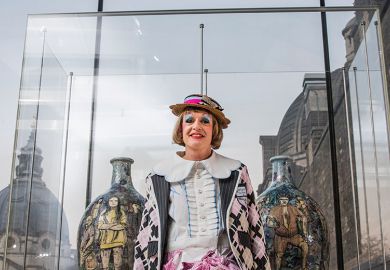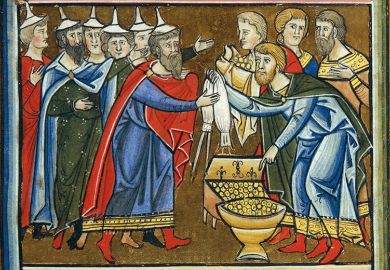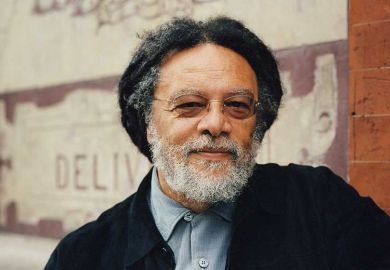For 40 years, Griselda Pollock has been, in her own words, “creating new concepts with which to challenge art history’s white patriarchal structure”.
It was for this work, together with her studies of cinema and the cultural impact of trauma, that she has become the first art historian to win the prestigious Holberg Prize, awarded each year by the Norwegian parliament to an outstanding researcher in the humanities, social sciences, law or theology.
Now professor of social and critical histories of art at the University of Leeds – and director of the Centre for Cultural Analysis, Theory and History which she founded there in 2001 – Professor Pollock studied history at the University of Oxford and was greatly impressed by the “riveting” lectures of the art historian Francis Haskell on 19th-century Napoleonic and Romantic paintings. She therefore decided to do an MA at the Courtauld Institute of Art, supporting herself by working in a shoe shop. Yet she soon became “bored” by a style of art history she described as “theoretically thin, historically unimaginative and without recognition of the complexities of gender and class”.
There were two key problems, she recalled. One was a bloodless, “formalist” approach that was useful in describing how “modernist artists devised innovative forms” but said little about “the very historical urgencies and dramas” which spurred them to do so. More significant, at a time when Professor Pollock was “beginning to get involved in the women’s movement”, was the stress on a canon of exclusively male geniuses.
Realising she had been given an “incomplete history”, she joined forces with a group of contemporary artists and art historians to explore the history of women in art. Many turned out to be hiding in very plain sight, for example in the standard 19th-century dictionaries of artists. When Professor Pollock decided to look at the women who had shown at the exhibitions in London’s Royal Academy of Arts, she found far more index cards than she was able to afford.
“Art history was fabricating a particular myth that required the secondary status of women to consolidate the genius status of men,” she concluded. Perhaps more surprising, this was a comparatively recent development. Impressionism, for example, was “the first formally egalitarian art movement” where men and women exhibited side by side and were given equal billing. However, when John Rewald produced the first major English-language History of Impressionism in 1946, important figures such as Berthe Morisot and Mary Cassatt were “made to disappear, reduced to being students of Degas and Manet”.
So Professor Pollock embarked on the research which fed into her first book, Old Mistresses: Women, Art and Ideology, which she and the late Rozsika Parker published in 1981. Yet when she described it to her supervisor, Sir Alan Bowness – later director of the Tate Gallery – he just laughed at her and advised her to stop wasting time on “a completely pointless subject”, Professor Pollock said.
Much of Professor Pollock’s subsequent work has been devoted to “understanding the logics by which we end up with this half-empty museum”. She has published 22 books, plus hundreds of articles. Along with studies of women artists, she has also adopted an approach she described in a 1999 book as “differencing the canon”, looking at Vincent van Gogh, for example, as “not just the mad genius, the isolated figure, the unloved. I can make him so much more interesting through a methodology which doesn’t require us to have that version of his story.” More recently, she has turned to examining the cultural impact of intensely traumatic events such as the Holocaust, although she regarded this too as a “profoundly feminist” project, not least because “the first generation of feminists of the 20th century were defeated by fascism”.
Although she described feminism as “the most successful social movement of the late 20th century” and no longer had colleagues who were “indifferently patriarchal”, Professor Pollock could “see no evidence that art history in general, and particularly at the level the public receives it, has absorbed any of the theoretical, methodical, conceptual transformation I have been trying to explain…People would say to me, ‘I don’t have to talk about women artists in my class because you do the feminism’.”
The Holberg Prize, to be awarded in Bergen on 4 June, comes with a substantial NKr6 million (£506,000) windfall, so how did Professor Pollock propose to spend it?
Part of it, she replied, would help fund her own research, since “art history is an incredibly expensive subject” – her 2018 study Charlotte Salomon and the Theatre of Memory incurred up front expenses of £17,000, including £7,000 on reproduction fees alone – and she is working on a striking range of books about Marilyn Monroe and the cultural memory of the Holocaust as well as one titled The Case against Van Gogh.
Much of the rest of the money, although details were still under discussion, would be devoted to “ways to consolidate possible spaces and means for the continuation of the critical tradition I have devoted my life to”.
Register to continue
Why register?
- Registration is free and only takes a moment
- Once registered, you can read 3 articles a month
- Sign up for our newsletter
Subscribe
Or subscribe for unlimited access to:
- Unlimited access to news, views, insights & reviews
- Digital editions
- Digital access to THE’s university and college rankings analysis
Already registered or a current subscriber?








